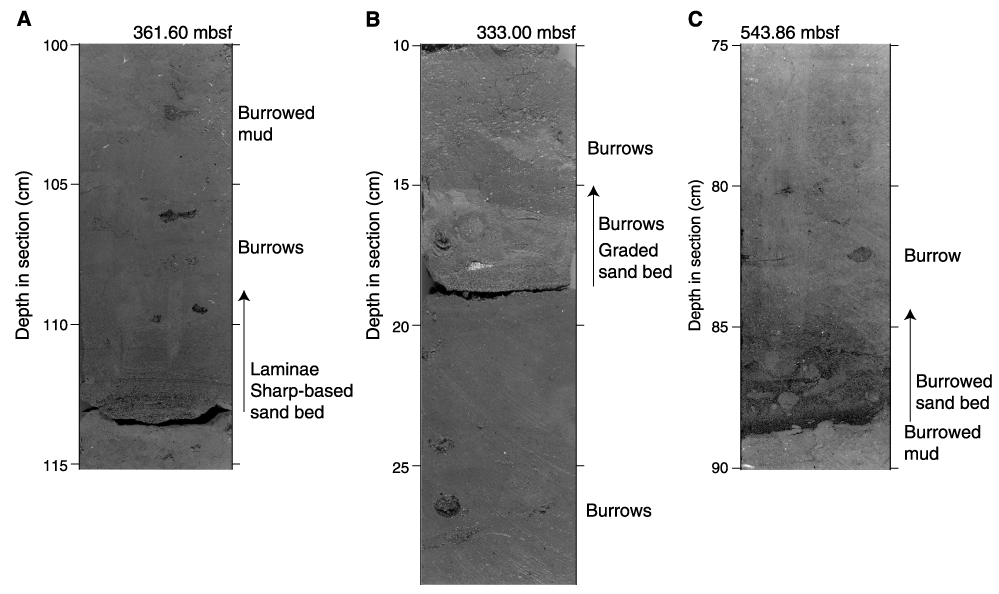Figure F6. Attributes of Facies A from cores. Vertical arrows indicate the extent of graded sand beds. A. A sharp-based, graded, medium-grained to very fine grained sand with lower planar laminae from 108 to 113 cm (interval 180-1109D-2R-2, 100-115 cm; 361.60-361.75 mbsf). The remainder of the photograph shows bioturbated silty mud with sand-filled burrows. B. A turbidite (15-19 cm) that grades from very fine grained sand to silt and is burrowed at its top (interval 180-1115C-6R-2, 10-29 cm; 333.00-333.19 mbsf). The base of this turbidite may have been ground away during rotary coring, and therefore the bed may have been both thicker and coarser at its base. The remainder of the interval consists of bioturbated silty clay with sand-filled burrows and scattered foraminifers. Arcuate scratches from 20 to 25 cm are saw marks. C. A sharp-based, graded, medium-grained to very fine grained sand from 84 to 89 cm (interval 180-1109D-21R-2, 76-90 cm; 543.86-544.00 mbsf). Burrowers have mixed the sand with the interbedded silty clay, so that there are clay-filled burrows in the sandy turbidite and sand-filled burrows elsewhere. The silty clay contains foraminifer tests and shell fragments.

![]()